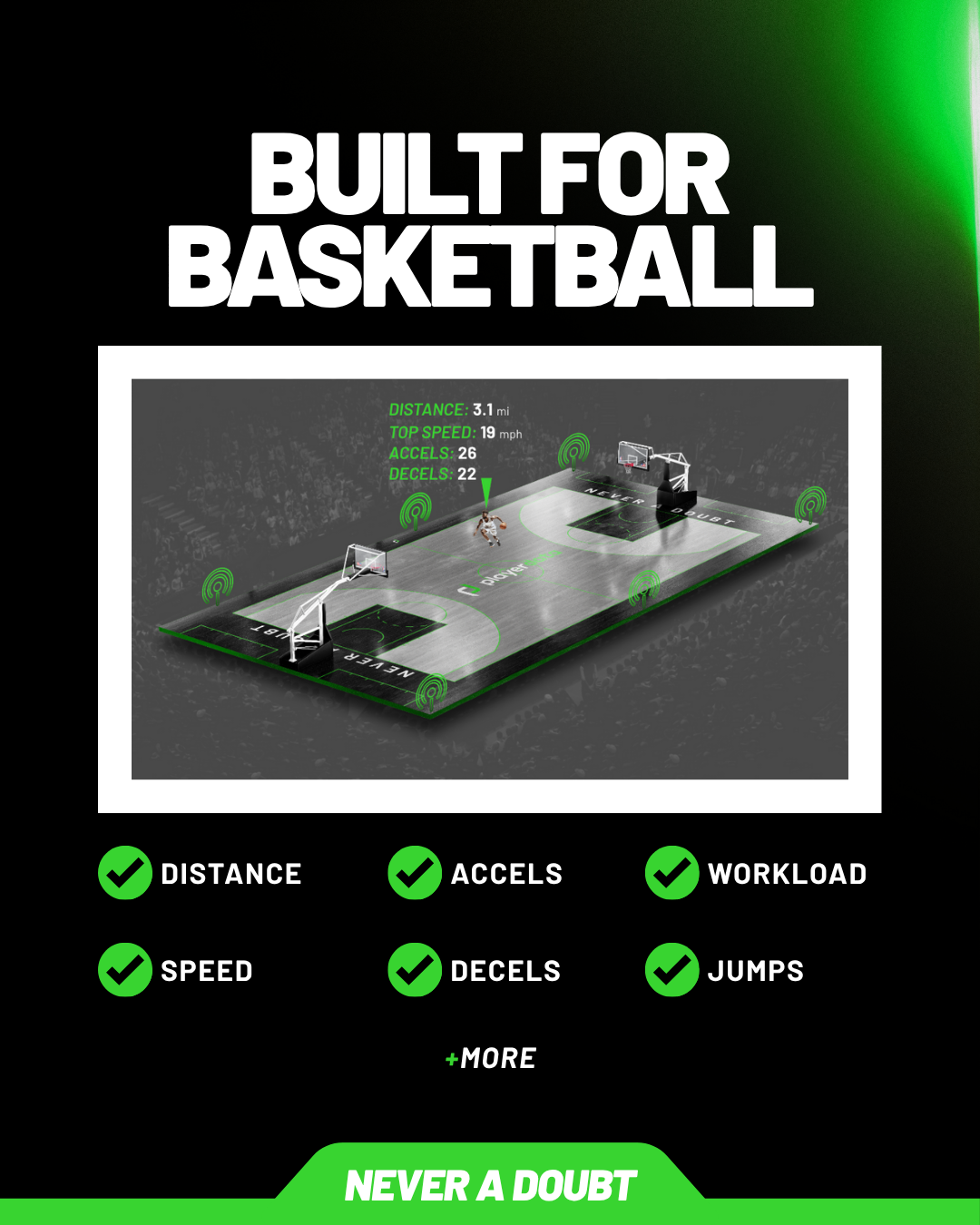Basketball Metrics Overview
A basic overview of our key metrics used to evaluate player and team performance in basketball.
Motion Metrics
Active Minutes
Time spent in active motion. Used to measure actual playing time and distinguish from stationary periods.
- Explanation: Time player spends in motion, not "Standing Still"
- Sports Science Insight: Indicates session activity duration, comparable to session length or weekly basketball play time
Acceleration Load
Volume metric calculated by summing acceleration in all three axes and dividing by 500. An indicator of total physical work during a session.
- Explanation: Measure of total physical work during session
- Sports Science Insight: Indicates session volume, useful for monitoring training load over time
Acceleration Load Per Minute
Intensity metric calculated by dividing total load by active minutes.
- Explanation: Average load per minute of active play
- Sports Science Insight: Intensity metric which is comparable across sessions of different lengths
Acceleration Metrics
High Accelerations
Efforts of increasing speed. Counted when the acceleration is above 3m/s² for a duration of at least 0.5s.
- Explanation: Count of high-intensity accelerations
- Sports Science Insight: Indicates explosive movements, like sprinting for fast breaks
Medium Accelerations
Efforts of increasing speed. Counted when the acceleration is between 2 and 3m/s² for a duration of at least 0.5s.
- Explanation: Count of moderate-intensity accelerations
- Sports Science Insight: Indicates rapid changes in speed
Low Accelerations
Efforts of increasing speed. Counted when the acceleration is between 1 and 2m/s² for a duration of at least 0.5s.
- Explanation: Count of low intensity accelerations
- Sports Science Insight: Indicates less intense movements, contributes to overall activity profile
Deceleration Metrics
High Decelerations
Efforts of decreasing speed. Counted when the acceleration is below -3 m/s² for a duration of at least 0.5s.
- Explanation: High-intensity deceleration frequency
- Sports Science Insight: Indicates sudden stops or direction changes, common in defensive plays
Medium Decelerations
Efforts of decreasing speed. Counted when the acceleration is between -2 and -3 m/s² for a duration of at least 0.5s.
- Explanation: Moderate-intensity deceleration frequency
- Sports Science Insight: Reflects speed control and quick stops, important for defensive movements
Low Decelerations
Efforts of decreasing speed. Counted when the acceleration is between -1m/s² and -2 m/s² for a duration of at least 0.5s.
- Explanation: Low-intensity deceleration frequency
- Sports Science Insight: Indicates less intense slowing down, contributes to overall movement pattern
Directional Metrics
Jumps
Jump events are detected when an athlete's vertical jump height exceeds 5cm.
- Explanation: Count of the jumps an athlete performs during a session
Lateral Accelerations
Lateral acceleration movements. Counted when the lateral acceleration is above 3m/s² for a duration of at least 0.5s.
- Explanation: High-intensity side-to-side movement frequency
- Sports Science Insight: Crucial for defensive slides and offensive maneuvers.
Impact Metrics
Low Impacts
Instantaneous impact events above 5G. Calculated from peak acceleration magnitude across all axes.
- Explanation: Impacts at or above 5 times gravitational force
- Sports Science Insight: Indicates overall physical stress, including less intense landings and contacts
High Impacts
Instantaneous high-magnitude impacts exceeding 7G. Calculated from peak acceleration magnitude across all axes.
- Explanation: High-force impacts experienced by athlete
- Sports Science Insight: Indicates frequency of high-intensity collisions or landings, useful for monitoring demanding aspects and injury risks.

